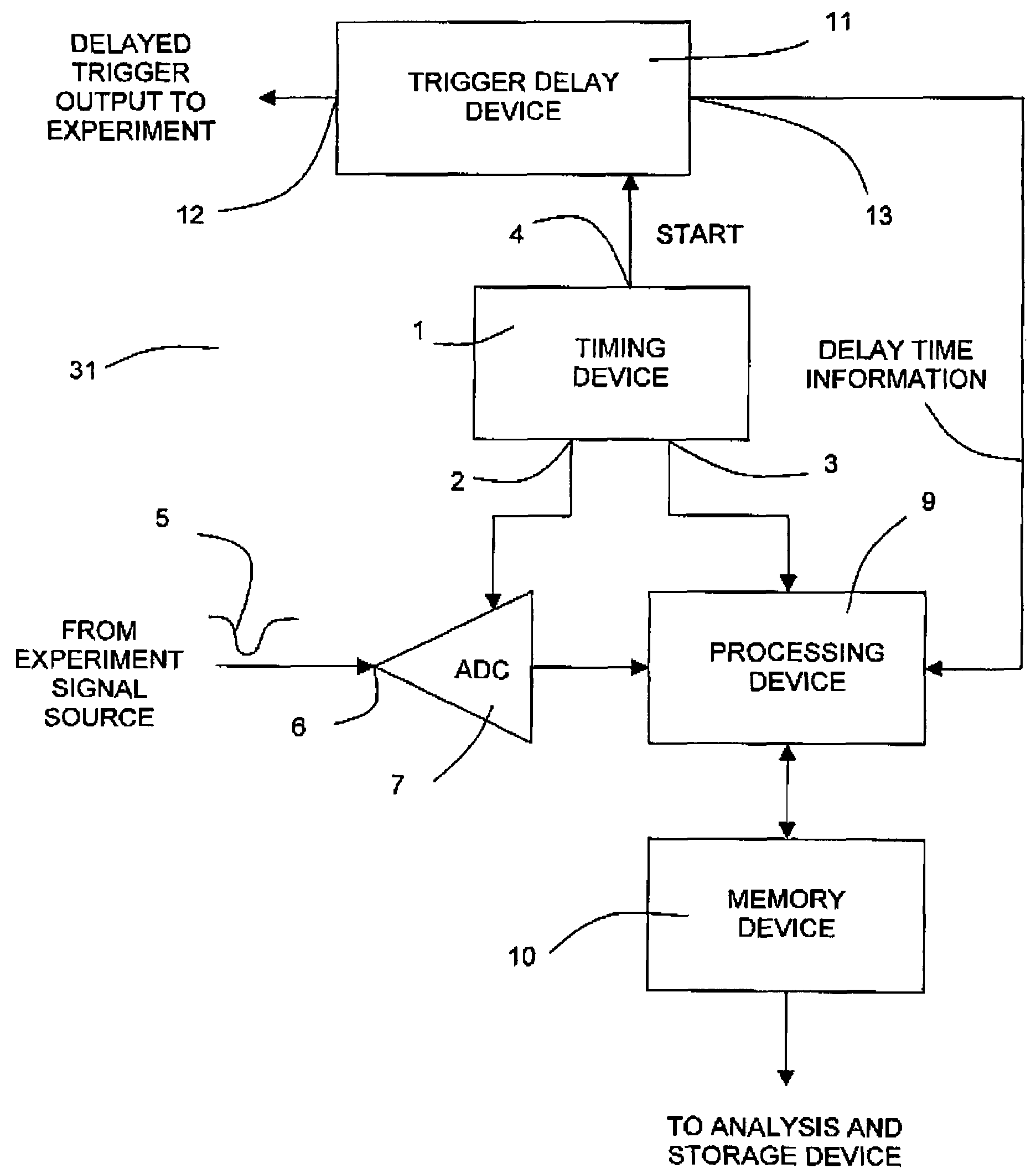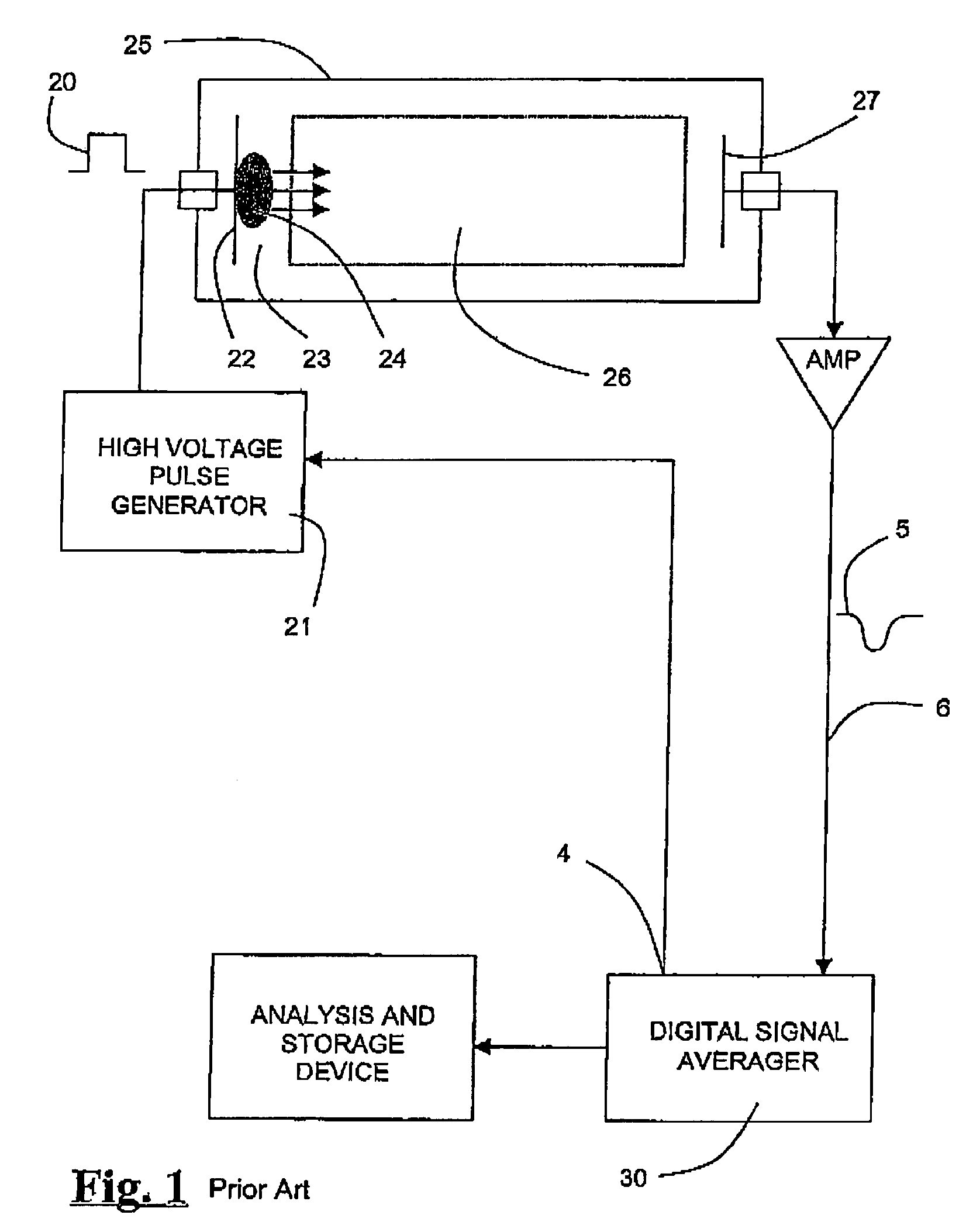Apparatus and methods for reduction of coherent noise in a digital signal averager
a digital signal averager and coherent noise technology, applied in the field of repetitive electronic waveform measurement, can solve the problems of inability to meet the corresponding memory requirements, and uncertainty in the relative phases of different recordings of the waveform, so as to achieve the effect of reducing coherent noise and random noise reduction
- Summary
- Abstract
- Description
- Claims
- Application Information
AI Technical Summary
Benefits of technology
Problems solved by technology
Method used
Image
Examples
Embodiment Construction
[0072]A digital signal averager configured according to one preferred embodiment of the present invention is shown schematically in FIG. 4A, and consists essentially of an ADC 7, a timing device 1, a processing device 9, a memory device 10, and a trigger delay device 11.
[0073]The timing device 1 includes a precision clock and auxiliary timing circuitry. One function of timing device 1 is to provide a timing signal at output 2 to control the time interval, TBin, between consecutive analog-to-digital conversions by the ADC 7.
[0074]A second function of timing device 1 is to provide a Start signal at output 4 that is synchronized with the ADC digitization cycle. This Start signal is generated at the initiation of a new scan measurement sequence, and is provided to the input of the trigger delay device 11. In response to this Start signal, the trigger delay device 11 produces a trigger signal at output 12, which is routed to the external experiment in order to stimulate a signal response...
PUM
 Login to View More
Login to View More Abstract
Description
Claims
Application Information
 Login to View More
Login to View More - R&D
- Intellectual Property
- Life Sciences
- Materials
- Tech Scout
- Unparalleled Data Quality
- Higher Quality Content
- 60% Fewer Hallucinations
Browse by: Latest US Patents, China's latest patents, Technical Efficacy Thesaurus, Application Domain, Technology Topic, Popular Technical Reports.
© 2025 PatSnap. All rights reserved.Legal|Privacy policy|Modern Slavery Act Transparency Statement|Sitemap|About US| Contact US: help@patsnap.com



